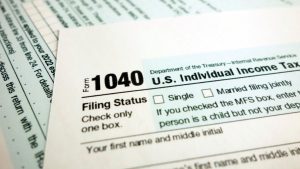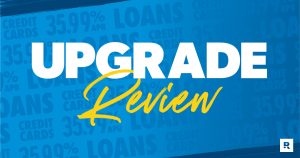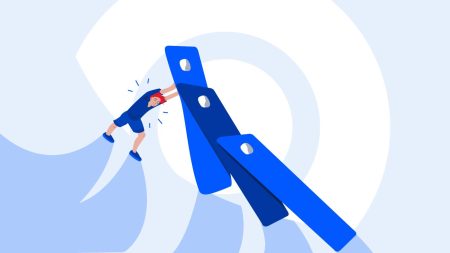While it’s commonly regarded as negative, debt isn’t inherently bad. A mortgage or auto loan can help you with housing or transportation. At the same time, credit cards can provide liquidity to purchase needed products, services or experiences.
Debt becomes a problem when you don’t have the means to pay it off or owe too much to too many companies to pay down the balances.
Help is available through many debt relief options. Determining how each option might fit your financial situation can help you make the best decision.
Types of debt relief
In simple terms, debt relief can do any of the following:
- Decrease what you owe
- Reduce or eliminate the debt’s interest rate
- Write off part or all of your debt
The more complex definition is that debt relief is an umbrella term for multiple programs that can help lower or eliminate your debt.
Debt consolidation loans
Debt consolidation loans involve money you borrow from a bank, credit union or other lending institution to pay the entire amount you owe to debtors and creditors. The entire debt is consolidated into one amount you pay back over time.
Many people gravitate to consolidation to pay off multiple loans because it simplifies budgets and can mean smaller monthly payments. The extra money can be put elsewhere, like savings or retirement accounts.
Pros of debt consolidation
- Consolidation can assist with budgeting efforts.
- It can provide a lower interest rate than credit cards.
- The method can help you pay down debt faster, depending on the loan’s term.
Cons of debt consolidation
- Loans require a good to excellent credit score (670 or higher).
- The loan application could lower your credit score.
- Upfront fees and costs can make borrowing costlier than the original debt payments.
When to use: If you have a good-to-excellent credit score and the costs and interest rates are less than your current payments.
Debt forgiveness programs
With a debt forgiveness program, a creditor eliminates part or all of your debt based on factors like financial distress. Debt forgiveness is typically used for non-credit-card debt, like student loans, mortgages, medical debt or even taxes.
Pros of debt forgiveness programs
- All or part of your loan could be wiped out.
- Debt forgiveness can help you avoid drastic measures like bankruptcy.
- Depending on the plan, you can pay down debt more quickly.
Cons of debt forgiveness programs
- Participation could hurt your credit score.
- Some debt forgiveness methods can be complex and time-consuming, with no guaranteed outcomes.
- The IRS considers forgiven amounts as taxable income.
When to use: If you’re interested in paying down overwhelming non-credit-card loans and want to avoid bankruptcy.
Balance transfer credit cards
A balance transfer credit card allows you to move existing debts from other credit cards to a single one. Balance transfer credit cards offer a 0 percent intro annual percentage rate (APR) on a balance transfer, then give you a period to pay off that amount without incurring interest charges.
The introductory rate must stay in effect for at least six months (unless you’re more than 60 days late on a payment). Some introductory rates can last up to 18 months or longer.
Pros of balance transfer cards
- It can help pay down debt more quickly.
- It reduces multiple credit card payments to one monthly payment.
- No interest rate accrues during the introductory period.
Cons of balance transfer cards
- A balance transfer fee (3 percent to 5 percent of the amount transferred) could add extra expense.
- Failure to pay the entire amount could lead to costly interest rate charges.
- You need a good to excellent credit score to qualify (670 or higher).
When to use: If you can pay off the card’s entire balance in time and the transfer fees don’t add more financial stress to your situation.
Debt management program
Through a debt management program (DMP), you work with a credit counselor on a roadmap to help you get out of debt sooner. The plan includes budget development to help you better manage your finances. The credit counselor can also work with creditors to negotiate concessions like fee waivers or reduced interest rates.
If creditors agree to the plan, you make the one monthly payment specified to the credit counseling agency, which then divides that amount between each creditor participating in the plan. While credit counseling agencies are nonprofit, a fee could be attached to each monthly payment you make.
Pros of debt management programs
- You obtain a personalized roadmap to help better manage your finances.
- The company you work with can help negotiate concessions from creditors, like lower interest rates.
- You make only one payment a month, which helps with budgeting and can improve your cash flow.
Cons of debt management programs
- Some debts aren’t eligible, and not all creditors will participate.
- You must close all open credit accounts (and won’t be allowed to apply for new credit during the process).
- You must make consistent payments to continue participation.
When to use: If you’re willing to work with a company that helps you develop a repayment plan and a budget.
Debt settlement programs
With a debt settlement program, you or a third-party company negotiates with creditors to settle debts. If you choose the latter path, the company creates a dedicated account where you’ll make monthly payments. That money goes to creditors and covers settlement fees.
Some debt settlement companies might tell you to stop making minimum payments to creditors during negotiations to speed up the process. Remember that this won’t stop harassing calls from creditors – and it could hurt your credit score.
Pros of debt settlement
- Debt settlement could help resolve debt more quickly than other options.
- It can help you settle your debt for less than you owe.
- This could be a way to avoid bankruptcy.
Cons of debt settlement
- Creditors might not be willing to negotiate.
- It harms your credit score.
- Written-off debt could be considered taxable.
When to use: If you have high levels of unsecured debt (i.e., medical bills or credit cards), struggle to keep up with minimum payments and have tried other debt-relief options.
Bankruptcy
Bankruptcy is a legal option that can provide a path to debt relief. However, this should be considered the tool of last resort when you’ve tried every other way to resolve your credit issues, and nothing else works. There are two common forms of bankruptcy:
- Chapter 7 (property liquidation to pay creditors)
- Chapter 13 (court-mandated payment plan to pay creditors)
Pros of bankruptcy
- Creditors can’t hassle you until a repayment plan has been finalized or the bankruptcy is discharged.
- Debts could be settled for less than what was owed, while others might be written off.
- You could get a fresh start and a clean slate on which to rebuild your financial foundation.
Cons of bankruptcy
- Bankruptcy can be expensive due to attorney and court fees.
- You might have to sell some of your assets (non-retirement investments, furniture or jewelry), depending on where you live and the type of bankruptcy.
- The bankruptcy can stay on your report for seven to ten years.
When to use: As mentioned above, bankruptcy is a last resort. It should be used only if you have a large amount of debt you can’t pay off during your lifetime, experienced an extreme income loss or are being sued for money you can’t repay.
When should I seek debt relief?
Unfortunately, people can get over their heads when amassing a lot of debt. The New York Federal Reserve’s Q1 2024 numbers reported that total household debt was $17.69 trillion. Though credit card balances declined (which is typical during the first quarter), they were still at $1.12 trillion.
Compounding the problem is an increase in credit-card delinquencies for maxed-out borrowers.
You don’t need to be maxed out on your credit cards to be considering debt relief. Here’s when you might consider using a debt relief program:
- If you’re behind on loan or credit card payments
- If it’s a monthly struggle to pay what you owe
- If you’ve attempted to resolve debt on your own with no or limited impact
- If you’re receiving an increasing number of harassing calls from creditors
Next steps
Not all debt relief plans are equal. Finding the right one depends on how much you owe, the type of debt you have and what you’ve tried in the past.
Additionally (and unfortunately), if you have a lot of debt, you could be a target for fraudulent debt relief companies or scammers. Watch out for red flags from these bad actors, like unrealistic promises, overly aggressive tactics or a demand for upfront fees.
Weigh the advantages and disadvantages of the different debt relief programs. While most can lower or eliminate debt, they can worsen things for you. The program you ultimately choose should work with your unique financial situation.
Read the full article here
















